Solar Energy, Solar Energy Basics, Solar Technology
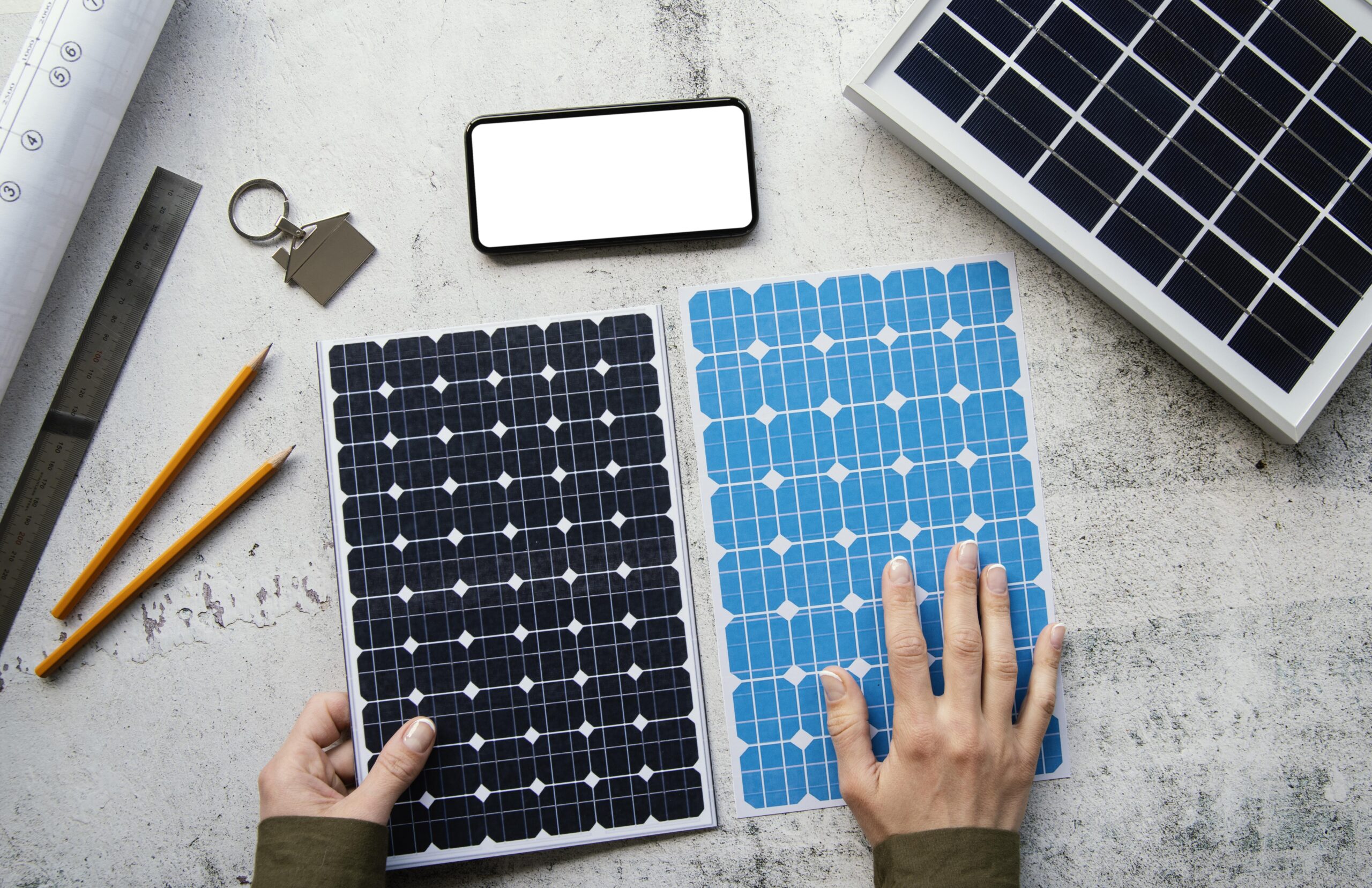
Solar energy has become a key player in the sustainable energy mix due to its reliability, availability, and eco-friendliness. At the heart of solar energy systems are solar panels. Although they all serve the same basic function—converting sunlight into electricity—there are different types of solar panels, each with its unique features. This article will navigate the efficiency of different types of solar panels, spotlighting the leading solar panel brands according to their efficiency, providing an overview of the diverse factors that influence their performance.
Let’s define what solar panel efficiency actually means, how it’s measured, and why it’s essential to consider when choosing a solar panel.
Solar panel efficiency is a measure of a solar panel’s capability to convert sunlight into usable electricity. The efficiency of a solar panel is calculated as the ratio of the electrical energy it produces to the solar energy it receives. It is typically expressed as a percentage. When a solar panel with an efficiency rating of 20% is exposed to sunlight, it implies that 20% of the sunlight that hits the panel will be converted into solar energy. The efficiency of a solar panel is contingent on the efficiency of its solar cells, similarly to how the overall efficiency of a car relies on the efficiency of its engine.
Solar cell efficiency refers to the proportion of sunlight incident on each cell that gets converted into electricity. The total efficiency of each cell contributes to the overall efficiency of the solar panel. This efficiency is influenced by various factors, including the cell’s composition, electrical configuration, surrounding components, and more. Solar cells are typically manufactured from either monocrystalline or polycrystalline silicon crystals.
Present-day solar panels usually have an efficiency that ranges between 17% and 20%. However, according to Berkley Lab, the median efficiency rating for residential solar panels installed in 2021 falls between 19% and 21%. Some high-efficiency solar panels on the market today can even surpass 22% efficiency, setting the bar for what is considered premium efficiency. However, such highly efficient panels are predominantly offered by select manufacturers such as SunPower and REC Group.
On the other end of the spectrum, certain solar panels, often categorized as low-efficiency, have an efficiency rating of less than 15%. The choice between high-efficiency and low-efficiency panels will largely depend on factors such as available roof space, the presence of shading, and budget constraints. It’s worth noting that solar panel efficiency has made significant strides over the years. Back in 1954, the first silicon solar panels had efficiency ratings of a mere 6%. Just a decade ago, in 2013, solar panels were only about 13.4% efficient. This continual improvement is largely due to advancements in solar technology, with innovations like perovskite solar cells promising to push the boundaries even further. These cells hold the potential to reach an astounding efficiency rating of up to 50%, suggesting a bright future for solar panel efficiency.
Different types of solar panels vary in their construction, performance, cost, and, crucially, their efficiency. Let’s get an understanding of the four types of solar panels available.
Monocrystalline solar panels, also known as single crystal panels, are identifiable by their sleek, even black appearance. This comes from the high-purity silicon used in their production, which is made into bars and then cut into wafers. The process ensures that the crystal structure is continuous and unbroken, which optimizes the flow of electricity.
The aesthetic appeal of monocrystalline panels extends beyond their dark hue. With fewer gaps between cells, they also feature a neat, uniform design. This is often a major selling point for homeowners concerned about the visual impact of solar panels on their properties. Monocrystalline solar panels have the highest efficiency rates, around 15-20%, due to the purity of the silicon used. However, this high efficiency comes with a higher cost of production, which translates to a higher selling price.
The manufacturing process of these panels has an environmental impact, with waste silicon and energy-intense production methods being concerns. However, advancements in wafer slicing technology are reducing silicon waste, while the use of renewable energy in manufacturing processes is addressing environmental concerns. Ideal for residential and commercial use due to their high efficiency and power output, monocrystalline solar panels are also an excellent choice for locations with limited space, as fewer panels are needed to generate the same amount of power as other types.
Polycrystalline solar panels, recognisable by their blue, speckled look, are manufactured differently from their monocrystalline counterparts. Silicon crystals are melted together to form the wafers for these panels, resulting in multiple crystals in each cell. This gives the cells their unique appearance and affects their performance. While less aesthetically pleasing than monocrystalline panels, their manufacturing process is simpler and less energy-intensive, leading to a more affordable price point. However, this comes at the cost of efficiency. Polycrystalline panels have efficiency rates around 15-17%, which is lower than monocrystalline panels.
The manufacturing process also results in less waste, as any excess material can be reused. However, because of their lower efficiency, these panels require more space to generate the same amount of power as monocrystalline panels. Polycrystalline panels are best suited for commercial and utility-scale projects where space is not an issue and the cost is a significant consideration.
Thin Film solar panels are a different breed altogether. They are produced by placing one or more films of photovoltaic material (such as amorphous silicon, cadmium telluride, or copper indium gallium selenide) onto a substrate. Their uniform, solid black appearance makes them aesthetically pleasing, and they can be integrated into building materials for a seamless look.
These panels have the lowest efficiency of the types discussed here, ranging from about 10-12%. This low efficiency results in a lower cost, but it also means they require more space than other types to produce the same amount of energy. The manufacturing process of thin film panels is the simplest and least energy-intensive, leading to lower emissions and less waste. The materials used, however, can include toxic elements, raising environmental concerns. Due to their low efficiency and high space requirements, thin film panels are often used in utility-scale installations or in situations where space is not a concern.
The newest technology in the lineup, CPV, is unique. Instead of utilizing the traditional flat panel design, it uses lenses or curved mirrors to focus sunlight onto small, highly efficient, multi-junction solar cells. CPV systems are often circular or square and mounted on tracking systems that keep them oriented toward the sun throughout the day. This feature, combined with the high efficiency of multi-junction cells (which can reach over 40%), makes CPV panels the most efficient on the market.
However, the high cost of production and the need for tracking systems makes CPV systems expensive and complex to install and maintain. These factors, combined with their high efficiency in high sunlight conditions, make CPV best suited for large-scale, utility-based solar farms in sunny regions. The environmental impact of manufacturing CPV panels is also higher due to the complexity of the multi-junction cells and the materials used. However, their high efficiency can offset this impact over the life of the system.
Let’s dive deeper into the top solar brands currently on the market according to Forbes, which include SunPower, Panasonic, QCells, Canadian Solar, and REC Solar.
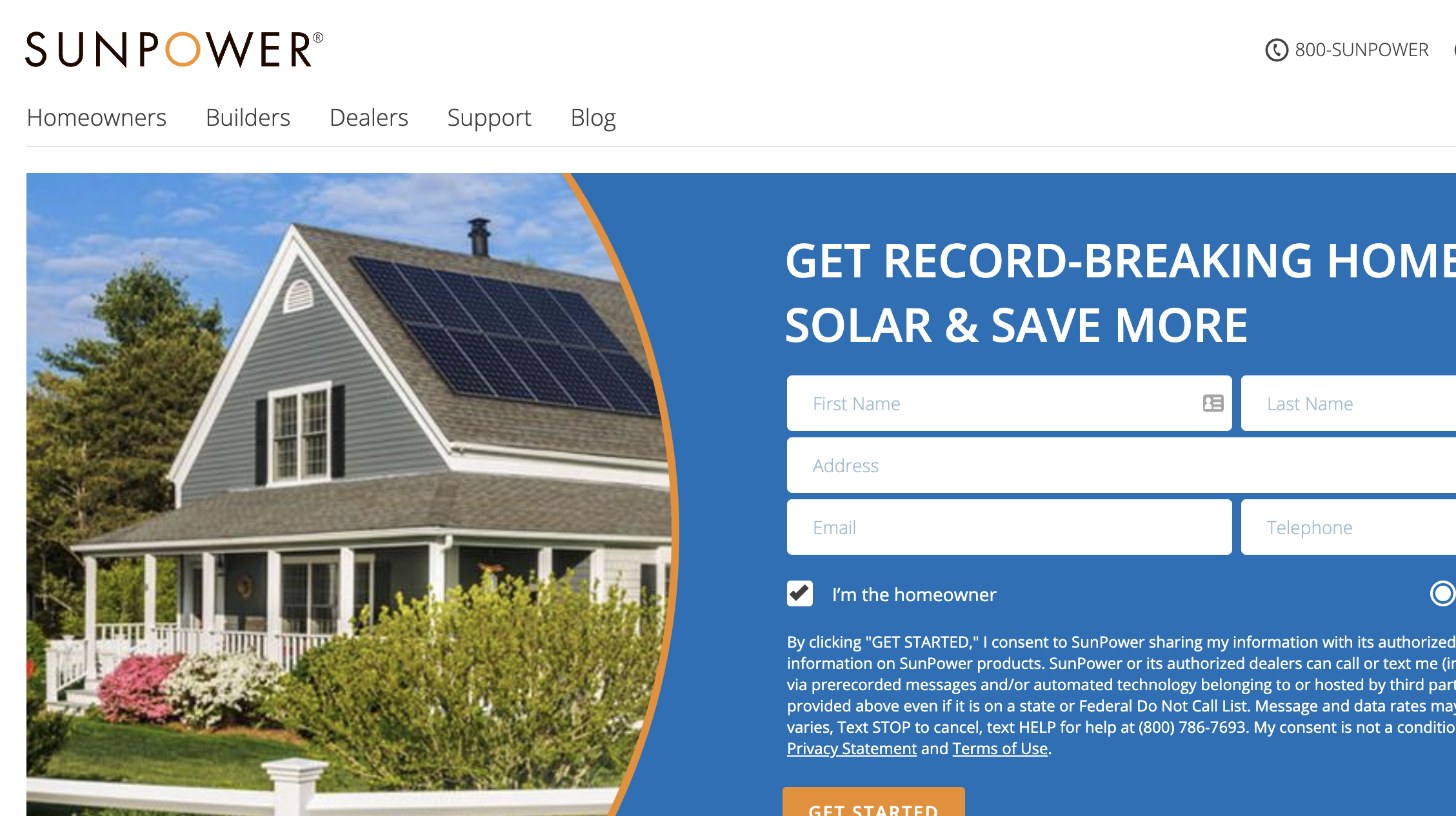
SunPower is an industry leader that holds over 1,000 solar technology patents. Known for its highly efficient solar panels, SunPower provides a variety of options at different price points, offering a maximum efficiency of 22.8%. The company is also a 2022 PVEL top performer in damp heat, mechanical stress, and thermal cycling tests. With a power production capacity of up to 440W per panel, SunPower offers a solar solution capable of keeping your home powered for up to 3 days, given sufficient battery storage. Despite a slightly higher price point, SunPower’s panels, and systems deliver high performance, particularly for homes requiring high-output equipment. They offer a 25-year warranty on solar panels and a 10-25 year warranty on system components.
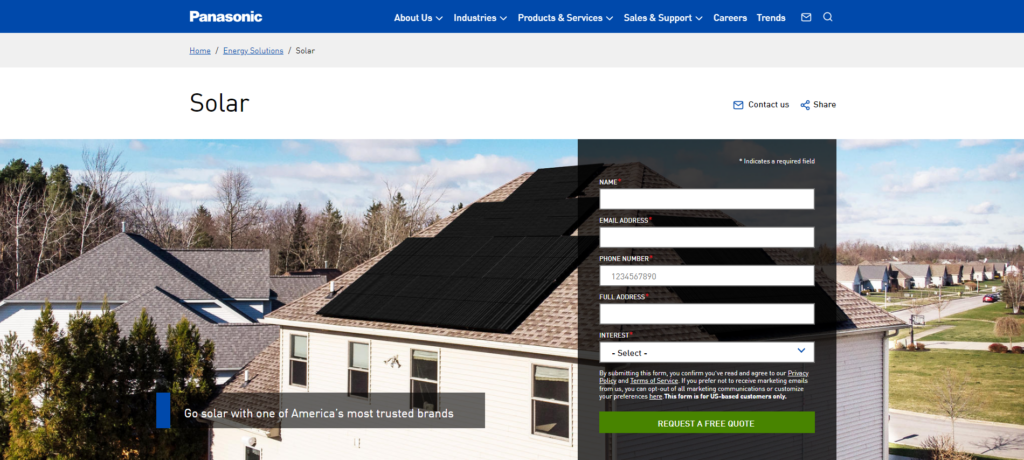
Panasonic is renowned for its electronics, and its EverVolt series of home solar panels makes it a top contender in solar energy solutions. The EverVolt series provides up to 410W of output per panel, with an efficiency rating of 22.2%. After 25 years, these panels are designed to maintain 92% of their output, backed by the same length of product and output warranties. Panasonic’s solar panels are ideal for powering homes in hotter climates due to their impressive temperature coefficient.
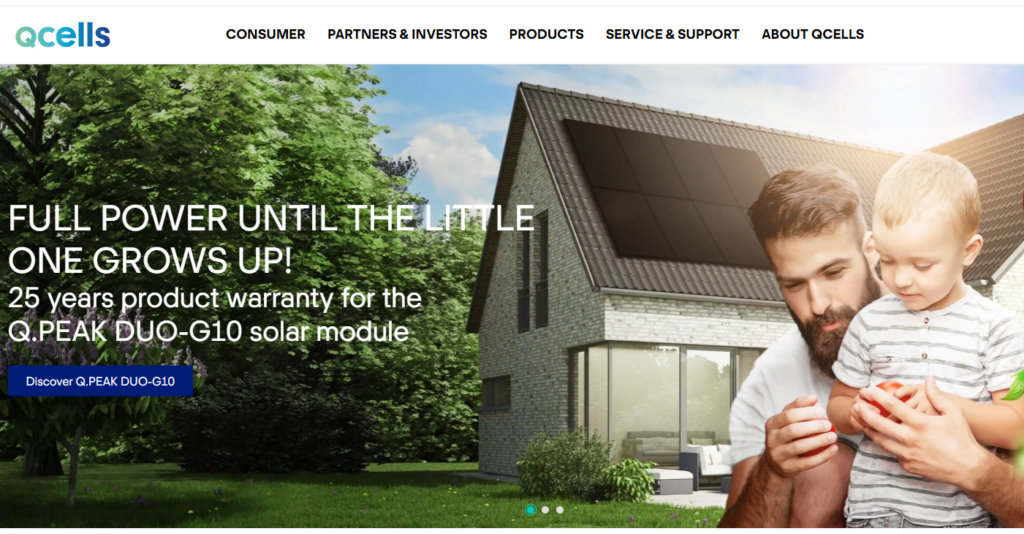
QCells manufactures solar panels and systems that provide up to 405 watts of power per panel, offering an efficient yet budget-friendly solar solution. Despite a slightly lower efficiency rating than some competitors (20.6%), QCells panels continue to produce 93.5% of their power after ten years and 86% after 25 years. These panels are particularly effective in cooler climates.
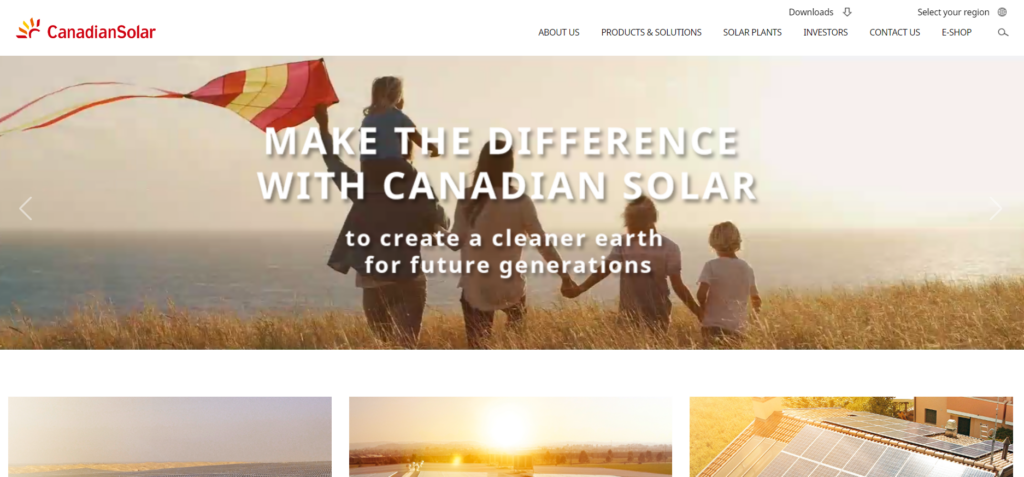
Canadian Solar is notable for its budget-friendly approach to solar power. Their panels can produce up to 460 watts per panel, with efficiency ratings reaching 22.50%. Canadian Solar offers both monocrystalline and polycrystalline solar panel options, but potential customers should note that some product warranties are shorter than the industry standard.

REC Solar home solar panels are excellent all-around performers, generating up to 430 watts of power with efficiency levels reaching 22.3%. They provide four distinct panel lines at various price points and abilities, and their high maximum snow load capacity and lower-than-average temperature coefficient make REC Solar panels perform well in any climate.
In conclusion, the choice of the best solar panel brand depends on several factors, including the climate of your area, your energy needs, and your budget. Each brand provides its unique strengths, making the selection process easier for different user needs and preferences.
The design and construction of solar panels themselves can significantly impact their efficiency. These factors encompass the materials used, the quality of the solar cells, and the technology employed in the construction of the cells.
The type of solar cell used is one of the major determinants of solar panel efficiency. As mentioned before, monocrystalline solar cells are the most efficient and commonly used in residential solar panels. Polycrystalline solar cells are less efficient and rarely used for new home rooftop solar installations. Thin-film solar cells are the least efficient and typically not used for home solar installations.
Solar cell construction significantly influences the efficiency of solar panels. Most solar panels today use monocrystalline solar cells because of their superior performance, but various techniques can further enhance their efficiency. Here are some key methods:
PERC Solar Cells: Passivated Emitter and Rear Contact (PERC) cells provide enhanced efficiency by using a reflective layer at the back. This back layer reflects the light that may have passed through the cell, enabling it to absorb more light and convert it into electricity. As a result, PERC cells can typically deliver around 1% additional efficiency compared to standard monocrystalline solar cells.
HJT Solar Cells: Heterojunction with Intrinsic Thin Layer (HJT) solar cells are a modification of traditional monocrystalline solar cells. These cells are positioned between layers of a different type of silicon, which absorbs various light wavelengths, consequently boosting power production. Prominent solar companies like Panasonic and REC Group are recognized for utilizing HJT solar technology in their products.
Half-Cut or Split Cells: Half-cut or split cell technology involves dividing solar cells in half using a high-precision laser. This process reduces the heat and resistance that the solar cell experiences, which, in turn, enhances the cell’s overall efficiency. The technique is a clear example of how refined modifications in cell construction can lead to substantial improvements in solar panel performance.
How the solar cells are wired together also affects the panel’s efficiency. Some manufacturers use multi-busbar technology, which involves multiple ultra-thin busbars instead of fewer, thicker ones. This configuration has a dual advantage. Firstly, it reduces the amount of shading on the solar cell. By minimizing the shaded area, more sunlight can be absorbed by the cell, thereby maximizing the conversion of sunlight into electricity. Secondly, thinner busbars typically have less resistance which can improve the electrical performance of the solar cell. This progressive wiring methodology can substantially enhance the overall efficiency of solar panels, making them a preferable choice for high-demand energy systems.
The backing material of a solar panel plays a crucial role in dictating its efficiency. Black backing, a popular choice for its aesthetic appeal, offers a sleek, uniform appearance that is often favored for residential installations. However, black backing has a thermal disadvantage as it tends to absorb and retain more heat. As solar panels heat up, their efficiency in converting sunlight into electricity decreases, a phenomenon known as the temperature coefficient. This means that solar panels with black backing, despite their aesthetic appeal, may not provide the highest level of efficiency, particularly in hot climates. It’s essential to balance aesthetic considerations with potential impact on panel performance.
Environmental conditions play a crucial role in how effectively solar panels convert sunlight into usable electricity. Factors such as temperature, sunlight intensity, and the angle of incidence can significantly affect the efficiency and performance of solar panels.
Temperature and Climate: Solar panels are generally less efficient in hot temperatures due to increased resistance. This is quantified by the temperature coefficient. A lower temperature coefficient means the panel handles heat better.
Angle and Orientation: The angle and orientation of the solar panel significantly affect its ability to absorb sunlight. The optimal setup varies by location but generally, solar panels should face the direction that gets the most sun exposure and be tilted to an angle close to the area’s latitude.
Shading: Shading can drastically reduce the efficiency of a solar panel. Even a small amount of shade on one part of a panel can reduce the output of the entire panel.
Dust and Dirt: Accumulation of dust and dirt on the solar panel surface can block sunlight, reducing the efficiency of the solar panel. Regular cleaning can help maintain optimal performance.
Age and Degradation: Over time, solar panels slowly lose their efficiency. This is known as solar panel degradation. Most manufacturers guarantee that their panels will still produce at least 80-85% of their initial output after 25 years.
In the realm of solar power, panel efficiency sits at the heart of the conversation. This key aspect can significantly determine the performance, cost-effectiveness, and long-term value of a solar energy system. Factors that impact efficiency fall into two broad categories: structural and environmental, both of which deserve careful consideration when selecting a solar panel.
Structural factors are intrinsically tied to the technology used in the panels. Innovations in solar cell construction, such as PERC, HJT, and split-cell technology, have led to considerable improvements in solar panel efficiency. These advancements are transforming the solar industry, enabling higher energy production from the same surface area and potentially making solar installations more feasible in a wider range of settings. On the other hand, environmental factors like temperature, shading, and orientation can significantly influence the real-world performance of solar panels. No matter how technically efficient a panel might be, its output can be greatly affected by these conditions, making them key considerations in the planning and installation process.
Across the spectrum of solar brands, varying efficiencies can be observed. Brands such as Panasonic, QCells, Canadian Solar, REC Solar, and SunPower, for example, each have unique offerings that provide different efficiencies. These differences highlight the fact that solar panel selection should always be a balance between highest efficiency and suitability for specific environmental and energy needs. Ultimately, the journey towards harnessing solar power is a nuanced one. It requires an understanding of the complex interplay between solar panel efficiency, the environment, and the specific needs of each installation. With continuous advancements in solar technology and a growing focus on sustainable energy sources, the importance of solar panel efficiency will only continue to grow. As consumers, it’s up to us to stay informed and make choices that maximize the potential of this powerful renewable energy source.
The efficiency of solar panels can be improved through regular cleaning, proper installation angle and direction. Avoiding shaded areas and using cooler colors for panel backing can also improve efficiency.
While the exact answer can vary from year to year, brands like SunPower, REC, Canadian Solar, QCells and Panasonic often produce some of the most efficient panels on the market.
Monocrystalline solar panels are typically the most efficient, with premium models reaching efficiency rates close to or exceeding 22%.
Stay a while and read more posts like this
In recent years, Europe has witnessed a remarkable surge in the adoption of solar panels, marking a pivotal shift towards renewable energy. Data from the...
Renewable Energy, Solar Energy, Solar Energy Basics, Solar Technology
“Unlock the Truth: Get the Facts on Solar Energy!” Introduction Solar energy is becoming increasingly popular as a renewable energy source, but there are...
Imagine a world where you’re able to cut your monthly energy expenditure substantially. A reality where your home isn’t reliant on finite,...